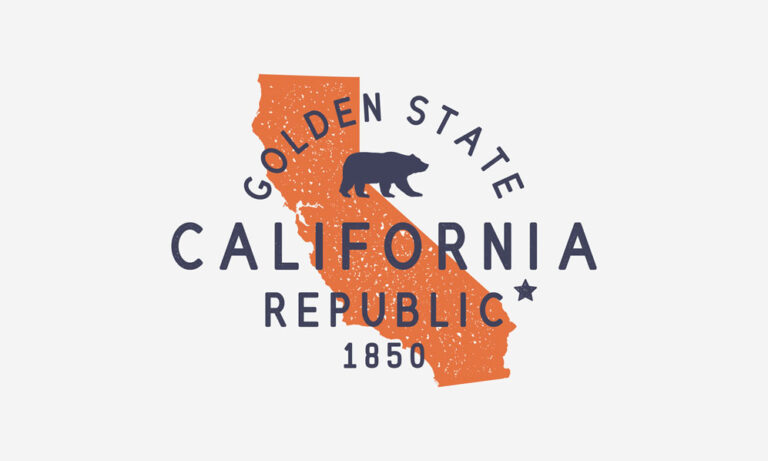
Because it was held in Los Angeles, the CAS 2023 Annual Meeting featured two general sessions on the unique risks and insurance market dynamics of California. The final session featured a conversation among four leaders in the California insurance industry, moderated by Steve Armstrong, chief actuary at Allstate Insurance Company and CAS past president.
Each panelist represented different stakeholders in this very large and strained insurance marketplace:
- Rex Frazier is president of the Personal Insurance Federation of California, representing the interests of insurance carriers.
- Doug Heller is director of insurance for the Consumer Federation of America (CFA), representing the interests of consumers.
- Victoria Roach is president of the California FAIR Plan, which is intended to be the insurer of last resort.
- Ed Cimini, FCAS, MAAA, is senior casualty actuary at the California Department of Insurance (CDI), which is intended to balance the interests of all insurance stakeholders.
Armstrong opened with an overview of the California property insurance market. From 2022 through September 2023, seven of the top 12 insurance companies have paused or restricted new business despite rate increases approved or pending with the CDI. The FAIR Plan has increased to 3% of the California market, becoming the unintended insurer of first resort. At the same time, AM Best has downgraded several companies due to their risk concentration in California.
In addition, rate filings are becoming more complex year-to-year; CDI filing reviews can take longer than six months and consumer groups are empowered to engage in the California rate filing process. Finally, insurers will not write in high-risk areas unless they can cover 100% of consumer claims and their expense, along with earning a fair profit.
Armstrong then summarized California’s Sustainable Insurance Strategy (SIS), a package of reforms unveiled by Commissioner Ricardo Lara on behalf of the CDI in September 2023. This comprehensive plan has three overriding goals:
- Provide accessible insurance for Californians.
- Create a resilient insurance market.
- Protect communities from climate change.
The SIS is responding to a complex web of market challenges, so it includes a lengthy list of regulatory solutions which Armstrong summarized from the CDI’s press release:
- Transition homeowners and businesses back to traditional carriers, with commitments from insurers to cover all parts of California by writing no less than 85% of their statewide market share in high wildfire risk communities. For example, if a company writes 20 out of 100 homes statewide, it must write 17 out of 100 homes in a distressed area.
- Give FAIR Plan policyholders who comply with the new “Safer from Wildfires” regulation first priority for transition to the normal market, thus enhancing the state’s wildfire safety efforts.
- Expedite the CDI’s introduction of new rules for the review of climate catastrophe models that recognize the benefits of wildfire safety and mitigation actions at the state, local and parcel levels.
- Direct the FAIR Plan to expand commercial coverage to $20 million per building to close insurance gaps for homeowners’ associations and condominium developments. This will help the state meet its housing goals and provide required coverage to other large businesses in the state.
- Hold public meetings to explore incorporating California-only reinsurance costs into rate filings.
- Improve rate filing procedures and timelines by:
- Enforcing the requirement that insurers submit a complete rate filing.
- Hiring additional CDI staff to review rate applications and inform regulatory changes.
- Enacting intervenor reform to increase transparency and public participation in the process.
- Increase data reporting by the FAIR Plan to the CDI, legislature and governor to monitor progress toward reducing its number of policyholders.
- Order changes to the FAIR Plan to prevent it from going bankrupt in the event of an extraordinary catastrophe. The changes would include building its reserves and other financial safeguards.
From 2022 through September 2023, seven of the top 12 insurance companies have paused or restricted new business despite rate increases approved or pending with the CDI.
With the background set, Armstrong introduced the four panelists and asked Cimini to start the discussion by describing how life has changed at the CDI given the new strategy. His answer began with staffing — the human face of the department. The passage of Proposition 103 in 1988 prompted the CDI to expand its staffing significantly, and many of those staff are retiring after 35 years of service. The CDI is hiring replacement staff with far less industry and regulatory experience, requiring the remaining tenured staff to invest in training and development of new hires to review the approximately 8,000 filings received per year across the wide range of insurance products. Staff transition is slowing the implementation of the SIS and requiring the department to rely on external subject matter experts for some processes, like the climate catastrophe model review.
This first question (and several that followed) led to verbal sparring between Heller and Frazier as they discussed the difficult balance between availability and affordability of insurance products, as well as expediency and due diligence in rate filings. Heller emphasized the importance of ensuring that insurance products are priced correctly. CFA considers getting it right more important than fast rate filing approvals and speed to market. Frazier countered by reminding the audience that Proposition 103 includes a requirement for timely review of rate filings (within 60 days), and companies are experiencing multiples of that in recent years. For example, Roach shared that the FAIR Plan’s most recent rate filing took two years to get approved.
Given many parts of the SIS impact on the FAIR Plan, Armstrong asked Roach what her organization is doing in response to the announcement. First, they have already expanded FAIR Plan underwriting limits to accept up to $20 million coverage per commercial location. Given that they are required to have broad availability for high-risk properties, they are working on filings to improve overall rate adequacy and implement new surcharges for high-risk characteristics. They are changing to a different vendor for wildfire risk scoring and were first in the market to offer a wildfire mitigation discount. Even with all that, the FAIR Plan continues to grow 20% year-over-year, which is not optimal for a healthy market and not sustainable for any single writer.
Armstrong asked Cimini where the Department of Insurance is heading on its review of catastrophe models and inclusion of the net cost of reinsurance in rate filings. Cimini summarized that the department is progressing well on both topics and is on pace for implementation by the end of 2024, as promised in Commissioner Lara’s announcement. Roach shared that the FAIR Plan is actively meeting with the CDI about incorporating their reinsurance costs into their rate filings to ensure actuarially sound pricing.
Heller reiterated his caution on the industry’s sense of urgency for change when the California homeowners’ insurance market has been extremely profitable since the 2017-2018 wildfire seasons. CFA believes that prospective combined ratios in California homeowners will be well below the rest of the U.S. based on the amount of rate increases approved since 2019. Further, CFA advocates for regulation of reinsurers because they earn higher returns than primary insurers without comparable regulation and consumer protection.
Frazier countered about the market’s apparent profitability as losses experienced from the 2017-2018 wildfires more than offset the eight profitable years in the last decade. He said most carriers today still have double-digit rate indications using the CDI’s approved formula. He also pointed out that California has a regulation allowing the use of reinsurance costs for three products (notably earthquake), but not wildfire. So, he argued, the industry is constrained by existing regulations beyond the provisions of Proposition 103.
After taking questions from the audience, Armstrong had to close the conversation with many of his planned questions left unasked. The spirited discussion and differing views across the stakeholders make clear the complex challenges of improving the availability and affordability of property insurance in California. If you were not able to attend this Annual Meeting session, it is worth your time to watch it on demand.
Dale Porfilio, FCAS, MAAA, is the chief insurance officer for the Insurance Information Institute.













